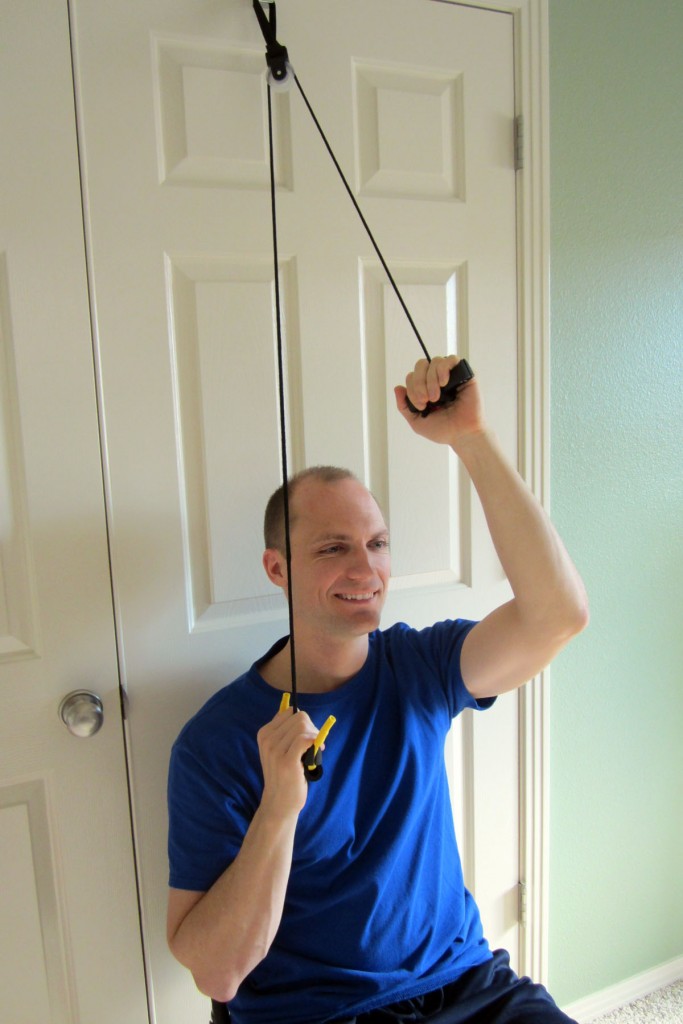Healthy aging could be defined as having the physical, mental, social, emotional, and spiritual capacity to live life on your terms. Maintaining adequate health is a combination of physical strength, cardiovascular endurance, joint motion, and balance in order to perform activities of daily living (ADLs). This includes any or all desired tasks, such as picking up your grandchildren, to playing golf or running.
The ability to move a joint through its full range of motion (ROM) is critical in maintaining the ability to perform many important functional tasks. Imagine trying to lift a box overhead with a shoulder that only has half its motion. That makes for a very difficult task. There are many reasons for loss of joint motion: muscle or tendon tears; generalized muscle weakness; paralysis; and severe arthritis.
Typically, osteoarthritis (OA) will occur in a joint that has previously been injured or one that doesn’t adequately move. Movement allows the proper nutrients to be circulated through the blood and synovial fluid that coats and lubricates the joint. There are also genetic factors that may predispose a person to developing OA, which is one of 171 different types of arthritis.
How can you best maintain joint mobility throughout the aging process? What is the minimum effective dose to help insure joint mobility as you age well? The key to maintaining mobility is to take each joint of the body through its full range of motion (ROM) at least once per day.
A crucial component to joint health and mobility is to insure that the joint surfaces remain coated with the body’s natural lubricant known as synovial fluid. Synovial fluid is best circulated in joints through mobility. To insure that the entire joint surface is coated, a full arc of motion needs to be performed.
By performing a full arc of motion for each joint, you also insure that the associated ligaments, tendons, and musculature can accommodate for this motion and won’t shorten over time due to lack of use. Moving each joint through a full ROM daily is the key to maintaining motion. In order to insure optimized healthy aging, it’s best to move that joint frequently.
The latest research indicates that sitting for more than two hours at a time can significantly lessen your life span. The real headline should read, “Even if you are a regular exerciser, sitting for more than two hours a day will still lower your life span.”
Frequent movement throughout the entire day is critical for health. This includes frequent mobility as it is important for joint health as well as critical for cardiovascular health. Ideally, you should choose movements and exercises that are functional and address multiple joints at the same time.
How to Maintain Healthy Joint Motion:
- The Squat. The squat activates nearly all of the muscles in the lower leg. It also takes the hips and knees into end range flexion as well as the ankles into near end range dorsiflexion. The squat is particularly effective at activating the muscles in the legs referred to as the posterior chain, which includes the hamstrings, the glutes (or buttock muscles), and the hip adductors (or the groin muscles). It also activates muscles in the hips, the calves, the stabilizing muscles in the ankles, the quadriceps, and as well as the core (the abdominals and lumbar extensor muscles). These muscles are critical for all functional mobility related movements, including walking; getting up from a chair or a toilet; or picking up someone or something. For more information on squatting, please refer to 7 Reasons Why the Squat is Fundamental to Life.
- Tai Chi and Yoga. Tai Chi, yoga, and Qigong all implement slow simple movements into a full body exercise that can help you to maintain your mobility, balance, strength, and general health as you age.
- Stretching and Self-Mobilization. There are generally 5 Ways to Improve Range of Motion when utilizing different stretching methods or self-mobilization. Using a foam roller is an excellent method to decrease pain and improve mobility throughout the hip and pelvis. For more information on how to use a foam roller, please refer to Foam Rolling for Rehabilitation.
- Shoulder Pulley. A simple, yet popular, method to maintain shoulder motion is through a shoulder pulley. Shoulder pulleys are an excellent way to use active assistive motion to regain motion in the shoulder post injury or surgery. I also instruct many of my clients to utilize shoulder pulleys for pain management as well as a prevention strategy for arthritis and loss of shoulder motion and function.
Maintaining adequate joint mobility and range of motion is an important component in healthy aging and can be a critical strategy in order to avoid many orthopaedic or arthritic conditions. Be proactive now, so you can save yourself from experiencing pain and debility in the future. It’s never too early or too late to implement strategies to help you age well!
Which strategy do you use to maintain your joint range of motion and mobility? It could be as simple as using the foam roller or a shoulder pulley. Please leave your comments below.
Looking for that exercise or book I mentioned in a post? Forgot the name of a product or supplement that you’re interested in? It’s all listed in the Resource Guide. Check it out today!
If you have a question that you would like featured in an upcoming blog post, please comment below or submit your question to contact@thePhysicalTherapyAdvisor.com. Be sure to join our growing community on Facebook by liking The Physical Therapy Advisor!

